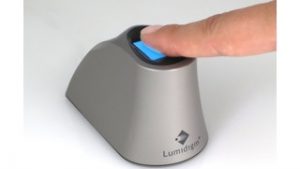
HID Global is driving biometrics adoption throughout Latin America, and especially in Mexico, ahead of the October 2018 deadline set by the country’s National Banking and Security Commission (CNBV) to deploy fingerprint identification technology across financial institutions.
More than 115,000 multispectral fingerprint sensors are deployed in Brazil to protect billions of ATM transactions per year, with nearly 80 percent of the nation’s ATMs used by over 85 million banking customers. Financial institutions in Chile and Argentina have embraced HID’s technology to secure pension payments for over one million elderly citizens.
HID’s multispectral fingerprint devices have helped eliminate fraud in Mexico’s national vaccination programme and other healthcare initiatives that provide millions of underprivileged citizens with subsidies for medicine and medical care.
The company’s biometrics sensors are also used extensively in commercial applications in Mexico, including verifying identity for more than 70,000 members of a large fitness club franchise. Now, the same technology is poised to improve banking security and convenience in Mexico as the CNVB gets closer to the October 2018 deadline for financial institutions to verify their customers’ identity using fingerprint biometrics when creating accounts, applying for loans and conducting other transactions.
HID’s patented multispectral fingerprint imaging technology captures unique characteristics from both the surface and subsurface of the skin, providing the most reliable fingerprint capture technology available. Multispectral fingerprinting works for the broadest range of people with normal, wet, dry or damaged fingers, across the widest range of usage conditions–from dirt and grease to sunlight to wet or cold conditions. HID Global’s Lumidigm biometrics solutions also feature field-updatable “liveness detection” capabilities that help eliminate fraud by preventing the use of fake fingerprints or “spoof” attacks. The devices use a top-ranked NIST certified MINEX III minutia algorithm for proven interoperability with industry-standard fingerprint template databases.











